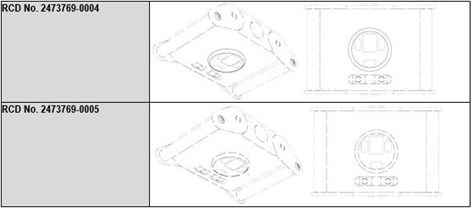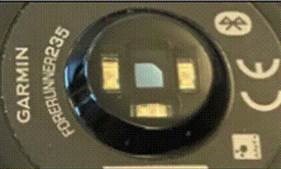Locations
In this recent case before the Court of Appeal, PulseOn, an optical heart rate technology company, sued Garmin, a competitor, for infringement of its registered community design (RCD) rights.
The RCDs in question depict features of a heart rate monitor which can be worn on the wrist, as shown below:


The key elements of RCD No. 2473769-0004 are: (i) the central rectangle feature which is interpreted as a photo sensor aperture; (ii) three oblong features which are interpreted as LED apertures; and (iii) a pair of concentric circles which are interpreted as a circular raised platform which allow the LEDs and sensor to be closer to the wearer's skin. RCD No. 2473769-0005 contains the same elements except for the circular platform which is shown in broken lines and therefore excluded from the design.
PulseOn claimed that a number of Garmin's heart rate monitors infringed its RCDs. One of the models in question, Garmin's Forerunner 235, is shown below:


The High Court held that PulseOn's RCDs were valid but not infringed. In coming to this conclusion, the High Court observed that the degree of design freedom for heart rate monitors is limited and that the scope of protection of PulseOn's RCDs is also limited. After comparing PulseOn's RCDs and Garmin's products, the High Court found that they did not produce the same overall impression and so there was no infringement.
PulseOn appealed, claiming that the High Court: (i) applied the wrong test for infringement; (ii) incorrectly found that there was limited design freedom for the arrangement of LED apertures; (iii) wrongly compared the RCDs with enlarged 3D models of Garmin's products; and (iv) placed too much weight on features which were determined by technical considerations. However, all four grounds of appeal were rejected and it was held that there was no basis for the Court of Appeal to interfere with the High Court's assessment of overall impression. The Court of Appeal found as follows:
- The test for infringement is whether the allegedly infringing design produces on the informed user a different overall impression from the earlier registered design. The High Court applied this test correctly, even though the judge asked himself whether the accused devices produced an "identical" overall impression to PulseOn's RCDs, rather than a "different" one. By saying that the designs did not create an identical overall impression, the High Court judge was deciding that the impressions were different. And despite omitting the word "overall" on several occasions, the judge clearly adopted and applied the correct test;
- Although the High Court judge may have stated the design freedom a little more narrowly than he should have done in relation to the arrangement of LED apertures, this did not result in a significantly wider scope of protection for PulseOn's RCDs. In any case, there was a limited number of ways of arranging three LED apertures around a central sensor aperture. Overall, the High Court correctly concluded that there was limited design freedom in this highly functional environment;
- The High Court legitimately examined an accurate model of the accused devices and compared it to PulseOn's RCDs. In this case, the comparison was hampered by the fact that the products and features in question were very small and the eye was drawn to what was behind the aperture rather than the aperture itself. Provided they were accurate, enlarged models overcame these difficulties and did not unfairly exaggerate any perceived differences;
- The High Court judge must have been aware of the technical reason behind differences in the spacing of certain apertures in PulseOn's RCDs and Garmin's products. The weight given to this difference was a matter for the High Court judge. It had to be balanced against the fact that the spacing was not amongst the features found in the design corpus, and was therefore entitled to more weight in the overall assessment. There was no reason for the Court of Appeal to interfere with that assessment.
Comment
This decision illustrates how design freedom and technical considerations can influence a design case. Although the degree of design freedom and technical considerations will vary depending from product to product, these factors play a major part in determining the scope of protection afforded to a design, and whether a later product produces the same overall impression and therefore infringes.